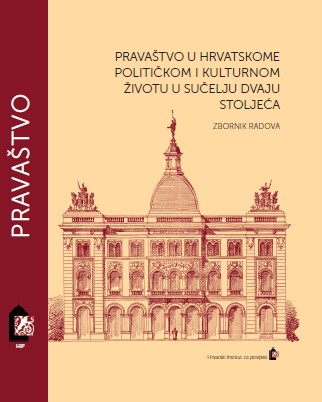Ideološke razlike između milinovačkih i frankovačkih pravaša uoči Prvoga svjetskog rata (1908.–1914.)
Ideological differences between Mile Starčević’s supporters and Josip Frank’s supporters on the eve of the First World War (1908–1914)
Author(s): Mislav Gabelica
Subject(s): Military history, Political history, Government/Political systems, Political behavior, Comparative politics, Pre-WW I & WW I (1900 -1919), Inter-Ethnic Relations
Published by: Hrvatski institut za povijest
Keywords: ‘Rightist’ ideology; Austro-Hungarian Monarchy; First World War; frankovci; milinovci;
Summary/Abstract: The philosophy of Ante Starčević had two components. The national component contained the contention that the Croats were a unique nation, which could not be compared to any other nation. As an expression of this contention ‘Right-ism’ denied the existence of Serbs as a unique nation, believing them to be a mix of various peoples without their own culture or common tradition. The political component of this philosophy taught that Croats, as a unique people, had the right to their own state, by which this component came into conflict with not only Yugoslav or Great Serbian political programs but also with all the programs in the Monarchy which would reduce the Croatian state to a region of either the unified Monarchy or its Hungarian part. At the end of the 19th century, limiting the territory of the Croatian state to the lands that were incorporated into the framework of the Monarchy, ‘Rightism’ recognized the existence of Serbs in lands outside of this framework, tying at the same time their political program unconditionally to the framework of the Monarchy. As a result the ‘Rightists’ viewed the Croato-Hungarian Agreement (Nagodba) and not the Austro-Hungarian Agreement as the main obstacle to the realization of their political program, clearly believing that it was possible to realize the unity of the Croat lands and the full sovereignty of the Croatian state even within Dualism. This assumption was supported by the belief, which was held by the ‘Rightists’ as well as their political opponents on the eve of the First World War, that the key tenets of ‘Rightist’ ideology was the negation of the existence of Serbs in Croatian lands and the negation of the Nagodba. In this period the wing of the Party of Right that was supporting Josip Frank (frankovci) based its work on both of these fundamental tenets of ‘Rightist’ philosophy; even if they were prepared for tactical reasons to accept the legality of the Nagodba, that is to say, at least temporarily suspend their political program. The wing of the party supporting Mile Starčević (milinovci), on the other hand, convinced that the Orthodox population of Croatia might accept the ‘Rightist’ political program, rejected that national component of ‘Rightist’ ideology and recognized the existence of Serbs in Croatian lands. Though Mile Starčević’s followers remained true to the rejection of the Nagodba, they likewise came to reject the legality of the Austro-Hungarian Agreement, attempting to replace the union of the two halves of the Monarchy with a federalist framework. Thus, indeed, they also rejected the political component of ‘Rightist’ ideology.
Book: Pravaštvo u hrvatskome političkom i kulturnom životu u sučelju dvaju stoljeća
- Page Range: 283-303
- Page Count: 21
- Publication Year: 2013
- Language: Croatian
- Content File-PDF

